Moving to Night City - Why it's Time to Celebrate Cyberpunk 2077
Post by Steve Farrelly @ 02:14pm 02/06/22 | Comments
Cyberpunk 2077 was perhaps one of the most hyped games of the past decade, but its launch tainted what is still a largely incredible game. We explore that in-depth below and reveal just why it might be time now to start celebrating Cyberpunk 2077...
I’m new to Night City.
You see, understanding that completion of construction took longer than anticipated (despite prospective buyers and tenants being allowed to move in earlier than they should have been), I bided my time before making the move. This was based purely on not wanting to be put out by said construction, and also because I’ve moved into incomplete neighbourhoods before. Unfinished walls, dangerous electrical, busted up roads… hell, even bad neighbours! All can impede and uncomfortably encroach on one’s navigation of a new stomping ground, and certainly make getting comfortable and feeling at home something of a chore, over feeling like a new adventure. So I postponed my move until work began anew, and waited.
And waited… for more than a whole year.
"I don’t even want to talk about the rental market or the used cars up for grabs -- place is a veritable gold mine of custom living and lifestyle reflection now...”
But now those unfinished bits? Well, they’ve been finished. (Or at least plastered over in such a way it’s hard to tell if there’s anything broken in the wall cavity anymore.) And those sparking, dangling wires? A bit of duct tape and now no longer dangerous. The roads? Nary a pothole in sight. What about the noisy neighbours? Moved on! Now we have new chooms, ready to mingle and converse with and hire. And I don’t even want to talk about the rental market or the used cars up for grabs -- place is a veritable gold mine of custom living and lifestyle reflection now. Its former self, a mere shadow of this neon-drenched statue-(re)erect.
I’m glad I waited.
What’s more is by waiting and not being sidetracked with lodging complaints or being impeded by any of that incomplete construction means I’ve really gotten to know the city. Inside and out. No distractions. And that’s the best possible way to enjoy Night City -- a place of hustle (and huscle) and opportunities; rabbit holes and dangled carrots leading you everywhere and nowhere, all at once.
It really is a time to celebrate the City on the Edge of Tomorrow, the City of Dreams and definitely not the “worst place to live in America”, as it was so (un)cleverly marketed once. No, now this place, this sandbox of potential, is simply ripe for the living. And since moving in, I’ve been doing just that, a helluva lot.
Trauma Team
Elden Ring has rightly secured gaming’s most recent spotlight and curiosity focus. It landed, first, at beck and call of its pre-release fans; dedicated Soul(s)bearers of Hidetaka’s cryptic gaming wastes. Their voice a chorus of anticipation and propriety, as if knowing Elden Ring would only be theirs for a short time before breaking through to an unsuspecting mainstream, powered by George R R Martin’s name for rent.
It’s been an unlikely triumph, and one that has sparked some incredible conversations about good game design, about game writing and lore and extrapolation of art and presentation. Some of these conversations have been in camps of dissent (with a surprising amount of vocal developers lambasting design elements), and some have been in celebration of a design that is antithetical to the modern tilt of simplicity and accessibility (not to be confused with motor-impaired accessibility initiatives). But all of it has been healthy and constructive and most of all, celebratory.

Related: A Tour Through Night City
In Cyberpunk 2077 and its release failings, there was no such discourse. The full gauntlet of its tumultuous launch saw vitriolic commentary aimed squarely at a studio that had technically failed, and whose art now suffered and became buried beneath the failure of mechanism.
“Not recommended at the moment. Maybe months later, but it only will be a mediocre something (maybe),” writes one Xbox user on Metacritic.
“I especially created an account on metacritic to rate this mess of a game. What the actual f*ck where [sic] the developers thinking on releasing,” wrote another on the game’s PS4 review page.
"It promised so much, and yet at launch players were left with a broken experience, borked in different ways depending on your platform of choice...”
Amidst this failure to launch came requisite criticisms of both delays and crunch, in wildly disproportionate volume, among other gripes. Punters seemingly over encumbered with choice when it came to finger-pointing and shouting disappointment at an admittedly hyper-hyped launch build-up. Pre-E3 briefings featuring a breathtaking Keanu Reeves muttering sweet-nothings to initiate fan salivation. Previews and interviews from trade shows seeming to reveal the style and type of game everyone and anyone has ever wanted to play. And a visual aesthetic that spawned an entire year’s worth of Cyberpunk-themed Indies furiously paddling out to ride the game’s uber-wave of anticipation. All of it promised so much, and yet at launch players were left with a broken experience, borked in different ways depending on your platform of choice, but all equally disenfranchising.
The game’s positive reviews, of which there were still many at launch, mostly came from the PC world, and those reviewing on superpowered rigs. Our own review of the game on one such setup said:
After 60-hours of walking the streets, driving through the Badlands, and diving through the wreckage of a now underwater part of Pacifica, that sense of awe, scale and detail never really went away. That said, there were more than a few momentary stutters; Relic Malfunction-like whenever a character did something glitchy or the AI behaved in such a way as to remove all pretence of that title. Artificial? Yes. Intelligent? Nope.We landed at an 8/10 -- seemingly generous amidst the chorus of dissatisfaction. But even with that high-powered platform, Cyberpunk 2077 still presented as incomplete. Which ultimately led to this writer’s desire to hold out and wait, in particular for the inevitable next-gen update, numerically valued at 1.5, before partaking in its many, many promises of cyberpunk adventuring.
Technical issues aside, Night City is more than a series of impressively ray-traced future-buildings and highly detailed character models -- it’s a city that has its own identity, it sets the tone for a futuristic world where humanity’s worst impulses has seen technology catch up and take each and every one of those to a new level.
This is familiar territory, of course.
"The Witcher III was a glorious triumph, and is now lauded as one of the best open-world action RPGs of the modern era. Maybe it’s time for us to start thinking of Cyberpunk 2077 in a similar way...”
We faced an almost identical situation with The Witcher III: Wild Hunt (though not nearly as knee-jerky or toxic), where parts of the launched game were incomplete or not as fully thought out as they needed to be, leaving it feeling rushed to a beholden finish line. After feedback and a handful of significant updates though, the game as it stood upon the release of Blood and Wine, its second and final expansion, The Witcher III was a glorious triumph, and is now lauded as one of the best open-world action RPGs of the modern era.
Maybe it’s time for us to start thinking of Cyberpunk 2077 in a similar way, post-1.5 patch and as we head towards its first gameplay expansion proper in 2023.

Related: Cyberpunk 2077 - How DLSS and Ray Tracing Present a Vision of the Future
Incompatible Brain Dance
So what should we celebrate when you take into account all of the above?
Of all of the bemoaned aspects of Cyberpunk 2077, its story was the least attacked, though strands and characteristics of it weren’t entirely off limits.
In its in-depth review of the game at launch, Quarter to Three railed heavily against the game’s cyberpunk setting at all, going as far as to suggest it wasn’t fit for the genre it aesthetically and philosophically sells itself as, highlighting the so-called McGuffin that is Keanu Reeves’ Johnny Silverhand as the main issue.
But what themes are being explored here? How is this cyberpunk? I would argue it’s not. It’s little more than a talking McGuffin. Shadow Warrior 2 had a lot of fun with this idea by imagining the crass Lo Wang playing host to the soul of a prim and proper princess. We’ve all seen Fight Club, which is fully aware that it’s imaginary sidekick is full of shit. Most of us played Arkham Knight, which used its sidekick to explore the traditional Batman/Joker dialectic of order and chaos (I’m a sucker for that stuff, from Christopher Nolan’s Dark Knight all the way back to Apollo and Dionysus in Greek drama). But the concept in Cyberpunk 2077 is wasted on a poorly written and laughably executed character, dipped into a noncommittal story that ranges aimlessly until you have to pick one of about three endings.It’s a harsh criticism, and one I can’t wholly agree with (and that's okay, discourse is good). Johnny’s façade and bravado are linchpin augments of his otherwise broken psyche. Chrome plating that telegraphs a certain sheen as he initially advertises himself to V; rockerboy with a devil may care attitude who really does hate corporations, and all that.
"To suggest it’s all a paint-by-numbers setup for the big bad and your overarching goals belies the layers of conflict that have gone into the city...”
This bravado and sheen, then, ought to be seen, fully, as what Night City values itself as to the outsider -- enigmatic; full of hope, wonder and conviction for all. That Johnny and the city are broken promises still advertising long dead ideals and personalities isn’t too difficult a stretch for the keen observer.
“All at once and absolutely by design Night City’s apparent neurodiversity in personalities and narratives and goals and agendas disorients,” Quarter to Three continues. “Overloaded senses aren’t as such because of the flashing neon, it’s the omnipresent thought dumps despite what some detractors would have you think.”
The writer's argument here, in its simplest form, is that because Johnny vehemently hates corporations, and because the city is full of people with different cyber-problems, that’s how CDPR has managed to slot itself into the titular -punk genre it has. But to suggest it’s all a paint-by-numbers setup for the big bad and your overarching goals belies the layers of conflict that have gone into the city, again also a fairly apt reflection of Johnny.
In addition, within Night City (and broader cyberpunk settings of capitalist dystopian ilk), everyone hates corporations. This is not a new concept and nor has CDPR somehow cheated the player or observer of something more profound. Even some within the game who work in the corporate world hate big business and enterprise. And in Night City and the larger Cyberpunk 2077 setting -- and this is important on the whole -- the world is your guiding neon light -- it informs the newcomer; we as the player, of the state of play. Any and all sentiments around process and progress, around hierarchical governance and the common street person and their digital-life woes, is reflected in the world in which you now exist. Without this, there is no perceived good and evil -- nothing to aspire to, nor steel yourself from.
"Deep down, Johnny is afraid of being forgotten and ignored; of not mattering. And this sentiment rears its head more often than not among the myriad denizens of Night City who struggle against its bombastic state, even while it bleeds in every other non-corporate controlled corner of itself...”
What is genius then, is the choices you’re given to make in the early throes of the game (and later, also). You can, for example, entirely inject yourself into that ‘corpo’ world if you want, and maintain a level of alignment there. Or not. The lines between the aforementioned are blurred based on your own levels of investment in its presented ideals. And throughout your journey your surmised position conflicts and conflates, as the game’s story beats ebb and flow. To a small degree Johnny is something of an example of the city’s disdain over corporations, yes, but really, deep down, Johnny is afraid of being forgotten and ignored; of not mattering. And this sentiment rears its head more often than not among the myriad denizens of Night City who struggle against its bombastic state, even while it bleeds in every other non-corporate controlled corner of itself (and sometimes there, too). He’s definitely an on-the-nose trope on the surface, and acts as a crutch for the story at times given the amount of distraction available. But if you take the time to dig deeper, you’ll find a lot of nuance and drive beyond his “fuck corporations” mantra.
Cyberpunk 2077’s strength lies in its layered world, through which you can dig and extrapolate and be informed, and become a decisive part of. To quote from one of the poignant movies mentioned above -- “you decide your own level of involvement”.
Mox Pop
Quarter to Three and its above-linked review wasn’t alone in shooting down all facets of the game. Some detractors even revelled in CDPR’s apparent failure, as if the developer itself were one of the game’s evil corporations, succumb to tall poppy syndrome. Somehow this was deserved and we should know better than to hope next time. A glib concept on the whole, but one not colourfully lost when you’re toying with metaphors and allegories and cautionary tales.
And so it’s tales where the celebration of Cyberpunk 2077 and all its moving parts needs to kick-off. The three-act main story arc in the game is not its A material, if I’m being honest (though that intro is pretty special). No, that “A material” stuff is what’s riddled throughout the world in CDPR’s so-called Night City Stories, alongside the living world itself in both the tangible and intangible. Then hidden between all of this are the darker, almost forgotten stories. Tragedies and triumphs for only the noseyest of nosey players; narrative thrill seekers looking to learn everything they can, whether from an out of place tag, an oddly-parked car or a body where really there shouldn’t be one. And in the context of the size of Cyberpunk 2077 and the potential for hidden chronicles like this; the back alley vicissitudes of varying degrees of depth and severity, the mind simply swims at not just the possibilities, but also at the work and effort behind the scenes to facilitate such multifaceted storytelling.
"Cyberpunk 2077 has its nuance and its layered parts, but on the whole it is a magnificent space; a lure of light and sound with the promise of everything...”
A strength of The Witcher III was that the game’s various contracts and emergent moments didn’t follow a formula outside of, well, hunting. From short and sweet Gwent quests to continent-hopping Witcher school gear pursuits, The Witcher III’s variety in its peripheral storytelling moments was second to none, and with Cyberpunk 2077 this approach is broadened to entirely new levels. It’s hard to refer to the aforementioned Cyberpunk 2077 content as emergent, though, because it is finite and it exists in the world in specific places. But these moments do tend to play out more organically than anything markered on your map, or than any of the essential pieces of the ever-shifting V and Johnny versus Arasaka story.
It’s also infinitely more emotional as a journey. The city bleeds, as I mentioned earlier, but art also imitates life. Rockstar has always embedded poignant social commentary in its OTT Grand Theft Auto series (and to a lesser extent, Red Dead Redemption), and CDPR has followed suit here, though the studio has been clever in masking any such politics and contemporary philosophy behind its retro-future setting. A lot of what we see and absorb, of course, is utterly on-the-nose to the -punk genre. And that’s okay. If it wasn’t, I’d be worried CDPR got it all wrong. Cyberpunk 2077 has its nuance and its layered parts, but on the whole it is a magnificent space; a lure of light and sound with the promise of everything, and it’s best embraced as such, with everything else you discover considered a bonus to the full experience.

Read Similar: Red Dead Redemption 2 - A Narrative Deep-Dive
It’s a Fixer Thing
There’s a moment when you catch up with Judy Alvarez later in the game. Judy is a potential love interest if you’re playing as a female V. If you’ve played your cards right, you’re chatting to her on the hood of a burnt out car, outside an abandoned bungalow that sits lonely and quiet beside a pristine lake.
You can jump the gun and ask her why you’re meeting her there, or you can ask about the Mox and Clouds -- places, people and events you just had a heavy hand in, that you had to be pretty particular about -- decision-wise -- in order to win over Judy’s heart. And if you do, her head slowly drops, as if the weight of those experiences, and the fact they’re still in play in hers and your worlds, comes bearing down.
"In this moment, Cyberpunk 2077 is beyond a game, it is pure emotion and this instance, this one or two minutes of dialogue and presence… it will stay with me forever...”
Ask her what’s up, and she says as much; that she wants those things ignored… avoided, if just for a moment. She looks depressed and beaten and tired. Her exasperated plea to just leave it all away from conversation is so readable from the screen that it’s easy to forget this is a videogame, and these are digital avatars in a fictional retro-future cyberpunk universe.
So you go back to the original question -- why are you here with her beside the lake? Her face lights up, slowly. She smiles and her eyes pierce you. You’ve done as she asked and in this moment, Cyberpunk 2077 is beyond a game, it is pure emotion and this instance, this one or two minutes of dialogue and presence… it will stay with me forever. And I made it all happen.
Cyberpunk 2077 has a number of moments like this.
A wonderful thing CD Projekt RED has done with its big and little story moments in the game is allow you to direct them. It’s not much, or at first might not seem like much, but what’s there sells your place in this world, and helps you impact it as the V you want to express yourself as. This dials up with dialogue choices, of course, and the seamless nature of tone and delivery, through differing options that can flip the emotion of a scene entirely on its head, is more than commendable. It is a boon and an outright reason to play the game. And it can (and does) happen at any time.
The writing and wherewithal, then, to assume certain player positions of presented scenarios is about as good as I’ve ever experienced in any form of media and has to be highlighted and celebrated here. There’s maturity in how the world presents itself to you, and there’s maturity in how you can react to those situations.
Not everything is as interactive, but sometimes these bites are left to float in the air, to exist as simply a part of the space. Your reaction from your couch or desk chair is as important as it would have been reflected in the game, and you get the sense that CDPR knew this all along, and can be forgiven for not serving up the same level of amplitude for every narrative element given time and budget constraints (lest we wait a further seven years for it in development).
Chrome Night Love
Early in the piece, in Megabuilding: H10 (location of your first apartment), you learn your neighbour, Barry, has problems with authority and suffers from PTSD. He witnessed an alleged suicide while serving as part of the NCPD and it's driven him to isolation and to incremental despair. With the right dialogue, he lets you in and you learn about his world and his struggles. And this exchange is all optional. It’s one of those tangibles playing out in the world around you. You can engage, but it has no bearing on any of your other missions, or you can just leave it. The played vignette wraps itself up in a pretty confronting way, too. (There are almost no happy endings in Night City.) CDPR’s handling of this writing, though, which had a resonant sense of realism, was a welcome inclusion for me (having faced similar issues with PTSD). In the real-world these conversations can still seem forced into the larger media narrative, but here it fits within V’s world without feeling panderous to recent acknowledgements of these types of issues.
My only complaint with it was that it came and went, and this happens a bit throughout your journey. It’s not that every one of these stories can track your progress and dynamically reflect the character you shape to be, remaining persistent and relevant. But it would have been good to have some sort of reminder of the exchange(s).
"She's torn through guests and the happy-no-more couple. Her reason? She awoke too soon from a planned coma, discovered she’d been tampered with in a TV production plot to build out drama on a reality TV series...”
Flipping the above relatable script to a tale of a celebrity wedding gone awry, just to highlight how different the storytelling can get, we're guided to Linh Hyunh’s nuptials ceremony, crashed by her crazed sister who is literally broken, gone full cyberpsychotic. This is a byproduct of augmentation messing with one's head, switching on its token namesake, often in violent and unpredictable ways. She's torn through guests and the happy-no-more couple. Her reason? She awoke too soon from a planned coma and discovered she’d been tampered with in a TV production plot to build out drama on a reality TV series known as Saigon Sisters she was one half the stars of. The sudden stir from her unwanted slumber gave her blurred vision. So, in steps me, to adjust the V-Hold on this presentation and attempt to rewrite her script. Too bad she went off it in the first place and adlibbed an entirely new ending -- “Dream White Wedding, Red-Stained Nightmare - Slaughter at the Seaside Cafe”.
A catchy title, that.
The cyberphsychosis side-missions are some of the most creative, but also some of the saddest you'll come across. There's elements of real-life peppered in there, too. Vets going off the rails due to a lack of support, post-military life, drug overdoses and abuse akin to Ice Rage, and worse. There's a lot to unpack if you're willing to read between the chrome-layered lines of dialogue or Shard confession. And it's all disparate, with unique tones and perspectives and agendas and machinations. It's glorious, really.
And then in a final example, where the game’s exemplary not-main-campaign storytelling is concerned, I happened upon a bhikku monk. These guys exist within the game-world as beacons of spirituality. They stand out from the world around you because they’re all untouched by progress and the chrome and digital way of Night City life.
Except this guy.
"You learn that it was forced upon him by Maelstrom fanatics, a gang of literal metalheads who worship cyberware -- the more machine you are, the better...”
This bhikku monk, a man whose very religion -- his devotion -- is to remain as pure a soul in both mind and flesh as possible, was decked out in chrome; his body transformed into a scarred mess of machine and augmentation. When you ask why he went against his beliefs, you learn that it was forced upon him by Maelstrom fanatics, a gang of literal metalheads who worship cyberware -- the more machine you are, the better. Even their initiation rites for joining centre around extreme augmentation; if you can’t give up the flesh, you’re essentially dead. The monk still chants and meditates in the Night City streets, but the physical blight he finds himself now as; a tainted, corporeal vessel for the transient soul, has damaged him… inside and out.
It’s a dark scene, and an even darker story.
There’s an event that plays out here, which is fairly pedestrian as far as activities go, but that doesn’t matter because it feeds an opportunity to the player for a *sort of* revenge. The motivational aspect on display here, which comes in the form of an entirely optional level of engagement, is palpable and driving. It's a choice with no consequence beyond feeding your own moral compass, and it's brilliant for that alone. This single NPC I discovered on a goalless jaunt through a marketplace was, again, an inconsequential distraction to anything else I had to do, but it informed a lot about the world. Rest assured, from that moment on, I spared no Maelstrom maggot I came across.
Eddie Up
I’ve shared the examples above because they represent the multifariousness of the game’s many, many stories it has to tell. At the time of writing this conclusion I’ve rolled one build and experienced three unique endings in more than 300 hours of Cyberpunk 2077 playtime. Is it still a broken experience in need of more TLC? Sure. Peds should move when you beep your horn, the lack of being able to talk your way out of confrontation (instead of being given lead time to flee) is a severely lacking option. Interactions with other NPCs could be slightly more expansive and, in the very late clean-up game, it would be good to be able to chat to the many chooms you’ve met along the way in deeper, more meaningful exchanges. Maybe even invite them around to any one of your many pads spread out across Night City, hrm? (Though my Kerry Eurodyne story arc played out late, so that filled that void a little.)
A bump in the level cap wouldn’t go astray, either.
Other things like weapon balance, AI behaviours, asset clipping, better vehicle physics, less pop-up and more would go a long way to tightening all the reapplied nuts and bolts that came with Update 1.5, and we expect to see more in the coming months as we close in on the game’s first expansion in 2023. Especially as there is a renewed interest in the game.
"It's time to drop the shouldered chip, leave the tumult and focus on what is actually a very incredible game with some of the best writing you'll ever experience...”
And it should be noted as part of this call to celebration, it’s not just the writing that needs to be highlighted. So many of the game’s missions and quests go above and beyond the usual action-RPG fare in terms of objectives. There’s variety in approach, freedom in tactical recourse and disparate charms that make up all of your engagements across multiple scenarios. And with this there’s also a lot of choice and consequence.
Some of the above, though, are flash-in-the-pan moments or situations I’d have liked to see more of, such as racing, boxing, and especially the unique scavenger hunts, but what’s here is still beyond anything else in the field and all of it, honestly, needs celebrating.
Cyberpunk 2077 is a watercooler experience that really should have punters exchanging stories on how they approached different scenarios, what their outcomes were, and ways in which they’d do it next time. It has that sort of depth, and breadth, of content across its written and interactive components, but this aspect has gone missing in the wake of all the negativity surrounding launch. But with patch 1.5 (and more to come) and its renewed stability, it's time to drop the shouldered chip, leave the tumult and focus on what is actually a very incredible game with some of the best writing you'll ever experience, layered within a stunningly-realised cyberpunk world.
It's time to celebrate Cyberpunk 2077.
Read more about Cyberpunk 2077 on the game page - we've got the latest news, screenshots, videos, and more!
Latest Comments
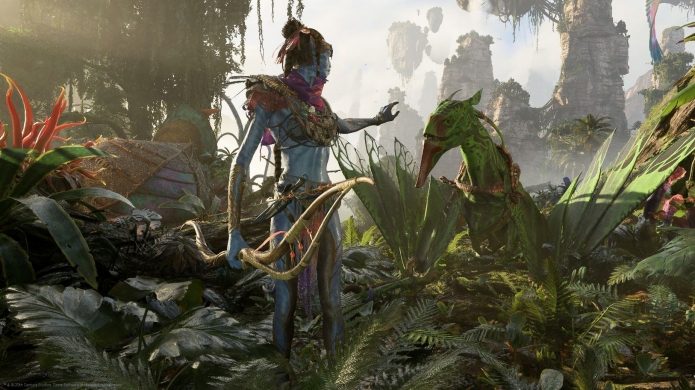
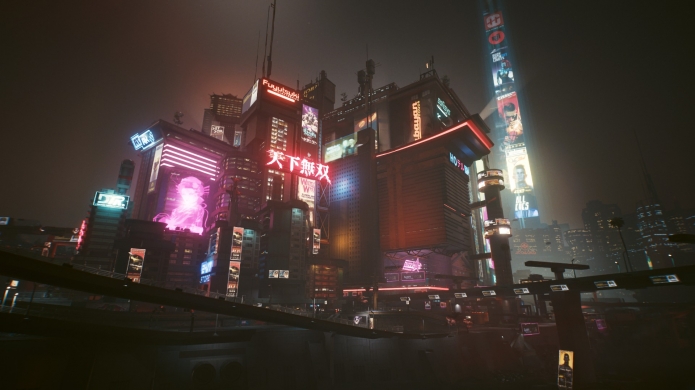
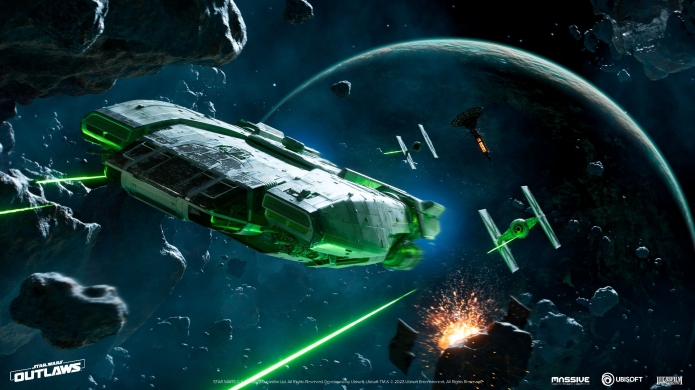
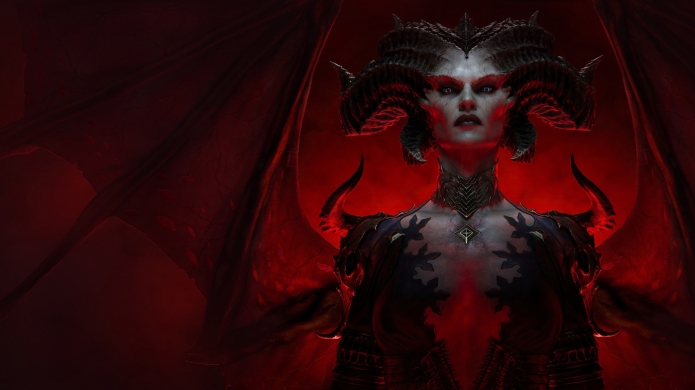





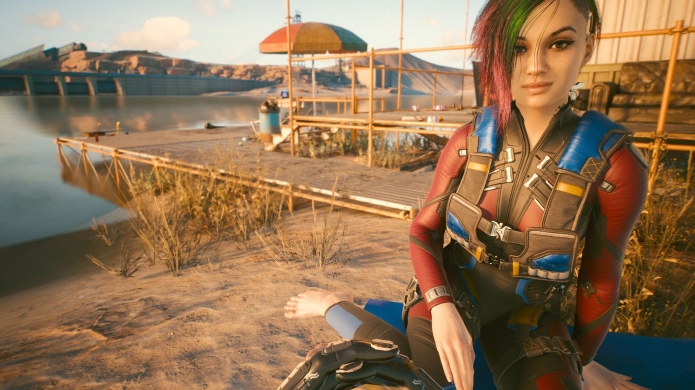




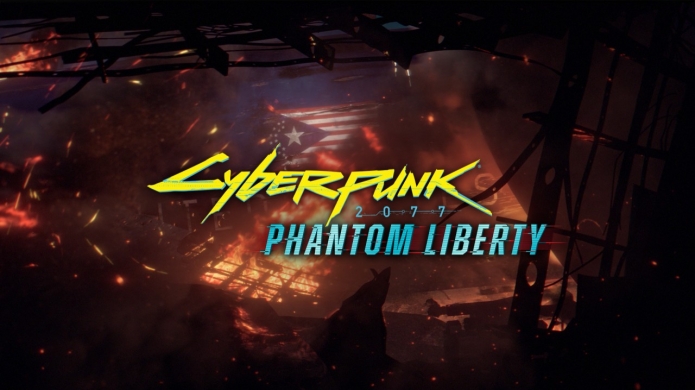


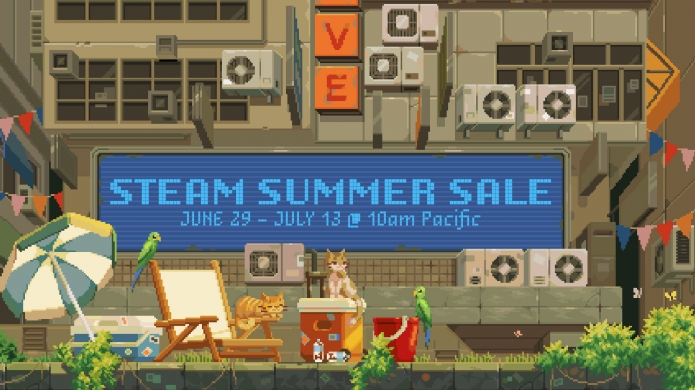


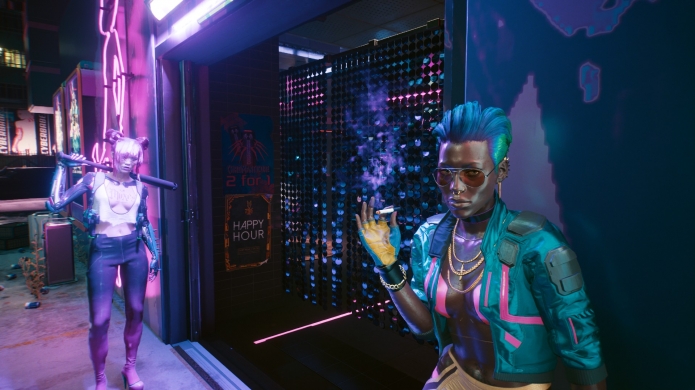
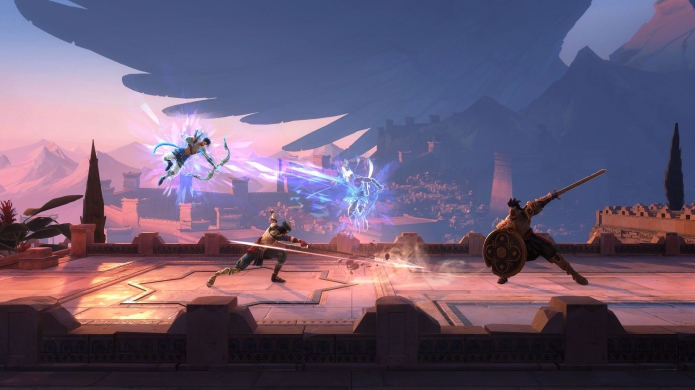
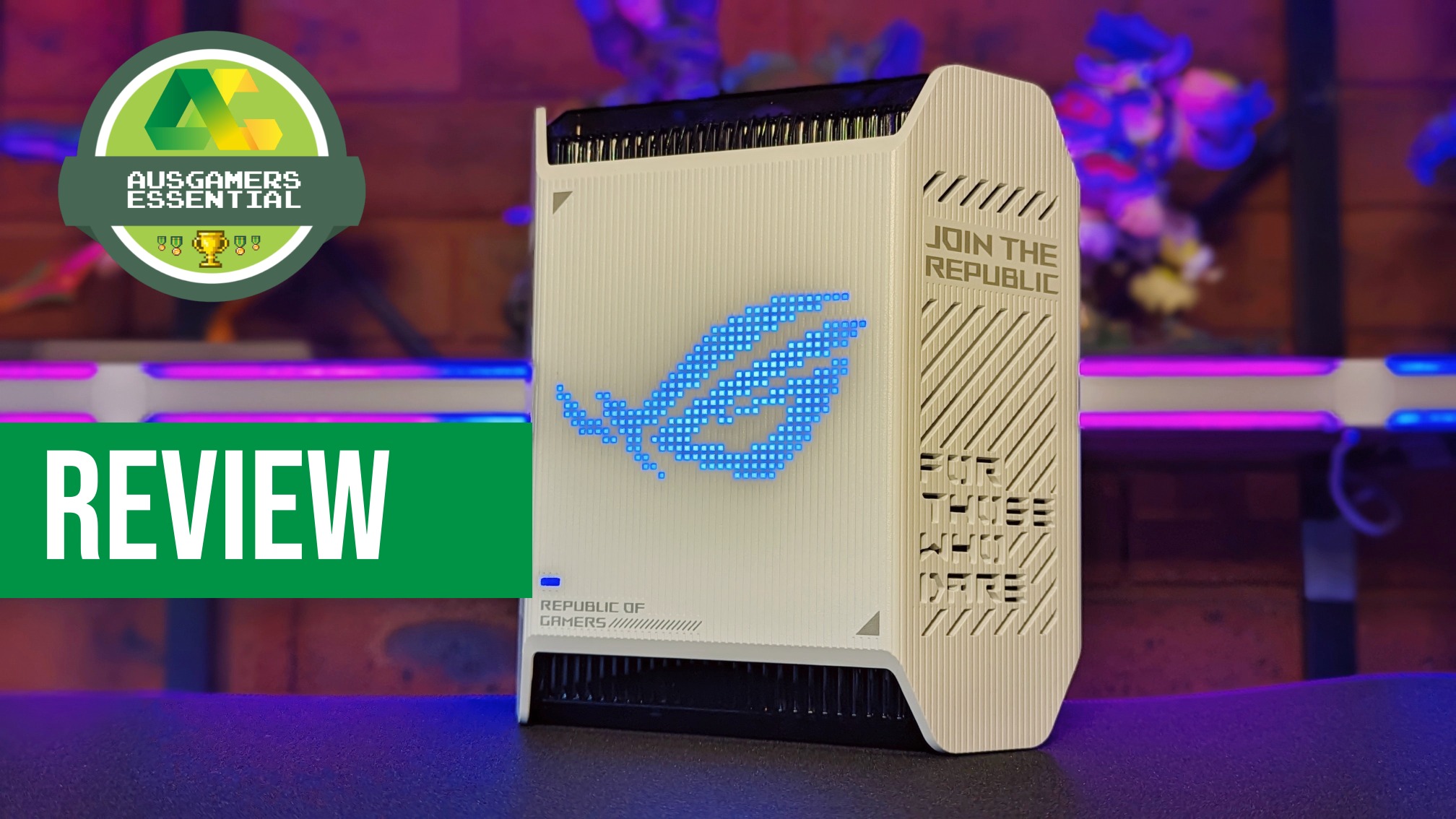

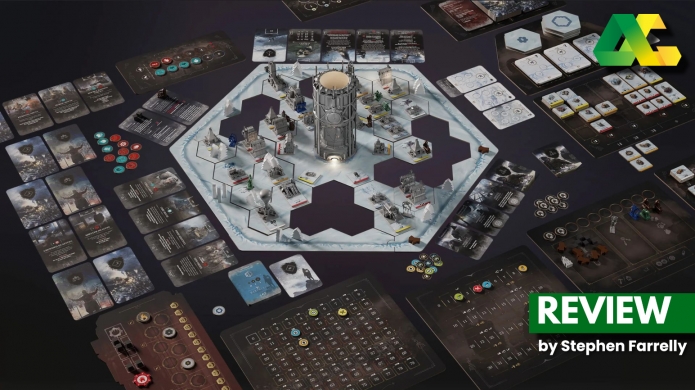

Posted 12:40am 04/6/22
Posted 03:34pm 05/6/22
On Series X it scrubs up very nicely and in that 300-odd hours I was never gated due to a bug or anything. A handful of crashes here and there, but nothing that borked my experience.
And its many, many stories and the different ways in which they're told really should be experienced by everyone.
I think I'm gonna roll a Corpo V in my next playthrough